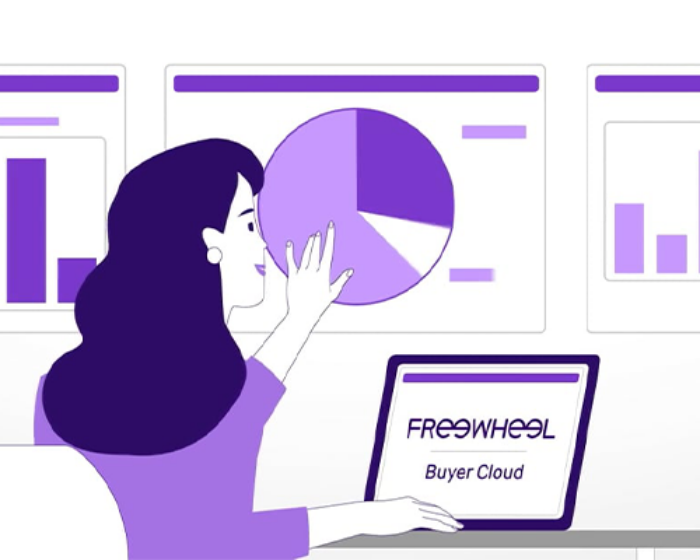As publishers look to prioritize revenue growth via advertising and consumers look to optimize their streaming subscriptions, the stars have aligned for hybrid video on demand (HVOD), an increasingly available streaming format that offers discounted, ad-supported tiers.
Amid continued ad view growth in the United States (6%) and Europe (15%), as reported in the latest 1H 2023 FreeWheel Video Marketplace Report, consumers, advertisers, and publishers can all benefit from hybrid video on demand.1 Read on for insights about how to leverage this model for success.
Hybrid Video On Demand: An Overview
Hybrid video on demand refers to video on demand (VOD) platforms that have a mix of viewing offerings ranging from paid to no-cost. This usually includes a discounted subscription tier that contains ad-supported content rather than the ad-free experience many consumers have come to expect from VOD platforms.
If this type of model doesn’t sound completely new to you, you’re not wrong: ad-supported content has been central to Hulu’s platform since its launch in 2008.2 In recent years, however, many other major streaming services have adopted the hybrid video on demand approach, making it the norm rather than the exception. Here is a brief timeline of adoption:
- In early 2021, Paramount Plus (rebranded from CBS All Access) launched with an ad-supported tier.3
- In June 2021, Max, formerly HBO Max, announced an ad-supported version of the streaming service in the U.S.4
- In October 2022, Netflix announced its ad-supported tier, which launched the following month in 12 countries.5
- In December 2022, Disney+ followed suit, making its ad-supported streaming option available in the U.S.6
- In September 2023, Prime Video took a slightly different approach, announcing that starting in early 2024, programming on the service would include limited ads in select countries including the U.S. The same announcement noted that an ad-free subscription would also become available at an additional cost.7
Hybrid video on demand is unique in the sense that it has benefits for consumers, advertisers, and publishers, rather than just a single party in the equation. To consumers, these discounted subscription options come as a benefit as more and more streaming services become available, and their combined monthly fees add up. For these users, watching ads during their viewing experience is worth the discounted price point. A study commissioned by Comcast Advertising found that 75% of consumers cited they were okay with ads if the content was free.8 Meanwhile, advertisers have the opportunity to reach even larger audiences with their messages as more viewers opt into ad-supported plans, and publishers can prioritize revenue growth through advertising monetization.
The Critical Role of Viewer Experience
Of course, any type of TV advertising lives or dies by its viewer experience, and hybrid video on demand is no different. The 1H 2023 FreeWheel Video Marketplace Report details how ad quantity, quality, and relevancy are key to maintaining a good viewer experience on hybrid video on demand.
In an exploration of the impact of advertising on viewer experience for European audiences, FreeWheel found that in ad-supported VOD, the majority of audience drop-off occurs during content, not ads. Specifically, only 22% of drop-off on long-form content occurs during ads, with a slight increase to 30% on short-form content.1 These figures suggest that the presence of advertising does not drastically affect a viewer’s engagement with the programming or their time spent watching, so long as the quality of the ad experience aligns with the premium nature of the content they’re viewing. This trend bodes well for the growth of hybrid video on demand, particularly for advertisers who are keen to see solid engagement from viewers.
Looking Ahead
Amid persistent industry change, the premium video ad market remained resilient in 1H 2023. With an increased number of subscription-based streaming platforms incorporating hybrid video on demand, advertising remains core to the premium video ecosystem.
As advertisers take advantage of this new trend of audiences actively opting in to view more ads, they must prioritize user experience more than ever to leverage the opportunity and to see continued success.
Sources:
1. FreeWheel, FreeWheel Video Marketplace Report: 1H 2023
2. “About Hulu.”
3. Alexander, Julia. “Everything to know about Paramount Plus, ViacomCBS’s new version of CBS All Access.” The Verge, 24 Feb. 2021.
4. “New HBO Max Ad-Supported Tier Is Available Today.” Business Wire, 2 June 2021.
5. “Netflix Starting From $6.99 a Month.” Netflix, 13 Oct. 2022.
6. “Ad-Supported Disney+ Plan Now Available In The U.S. With More Than 100 Advertisers Across All Major Categories At Launch.” The Walt Disney Company, 8 Dec. 2022.
7. “An update on Prime Video.” Amazon, 22 Sept. 2023.
8. Comcast Advertising, Third-Party Research Study using Happydemics, 2021, N=2162



